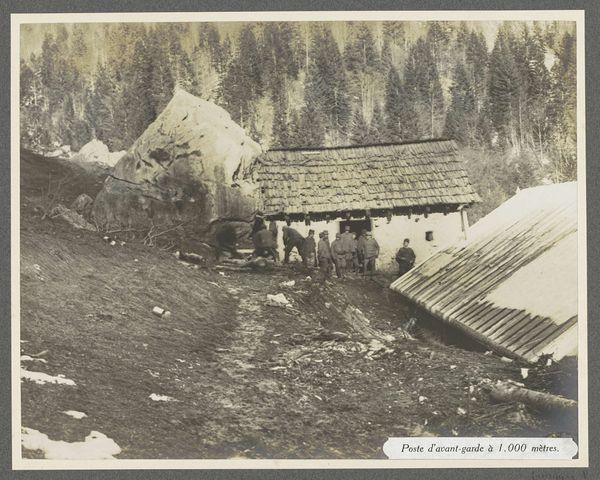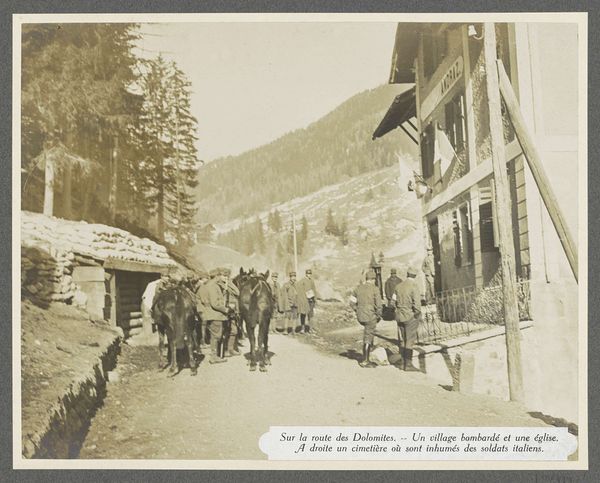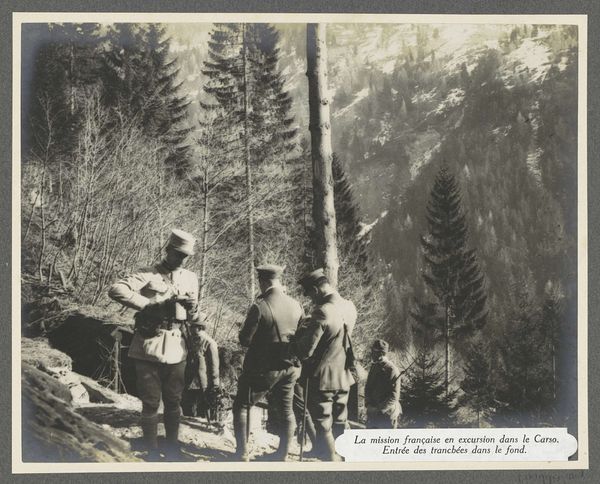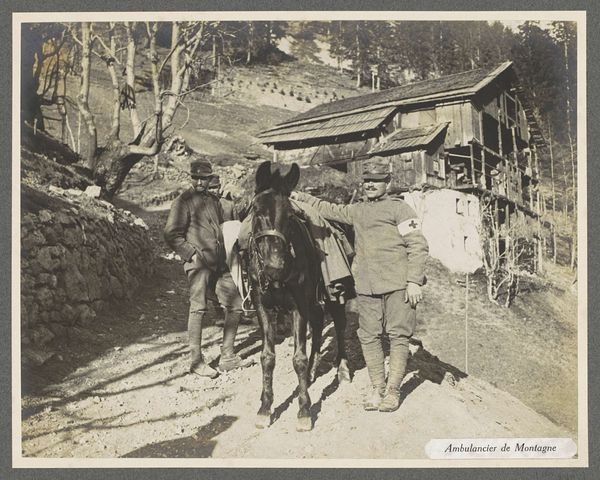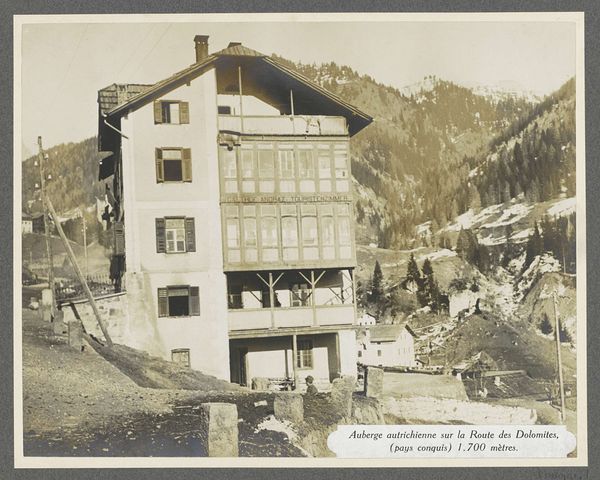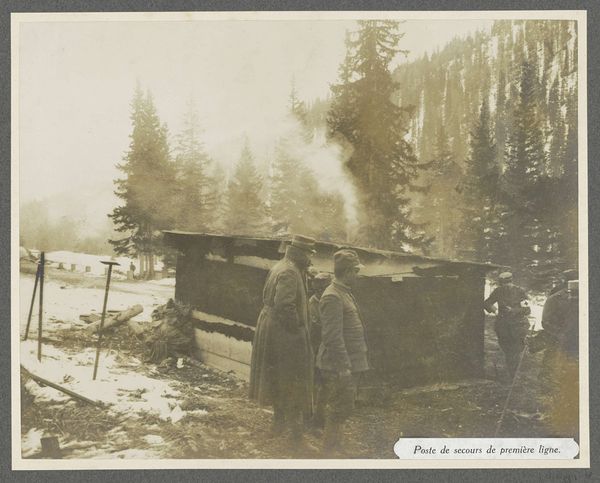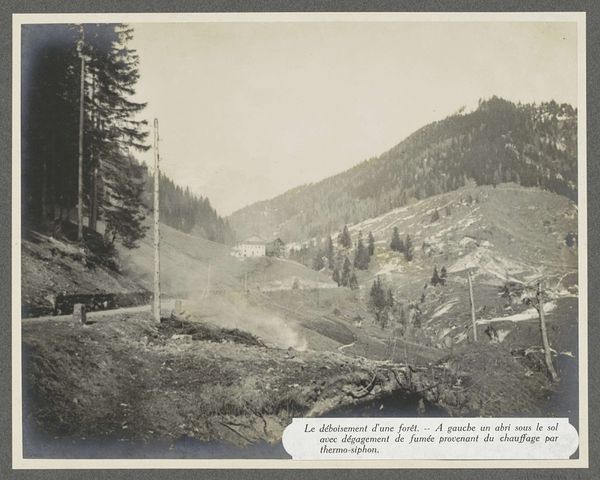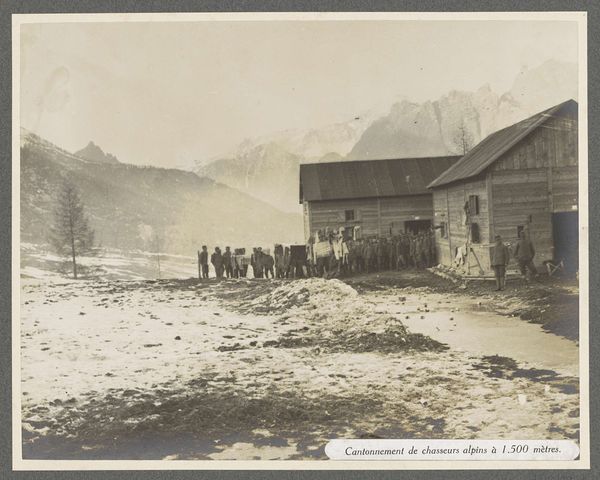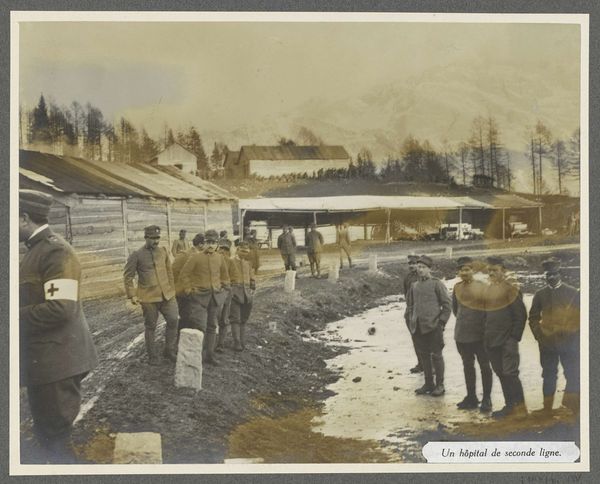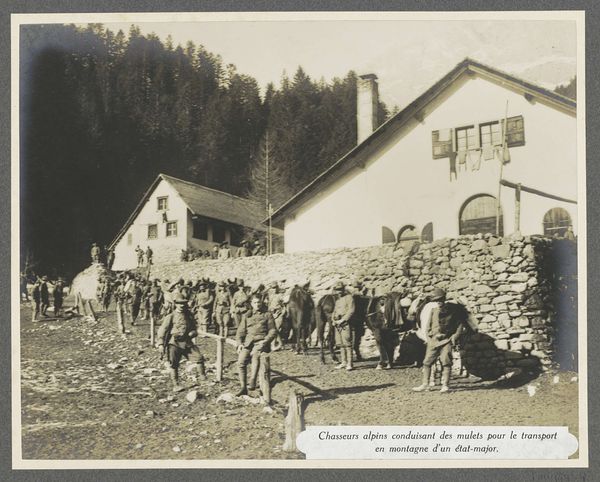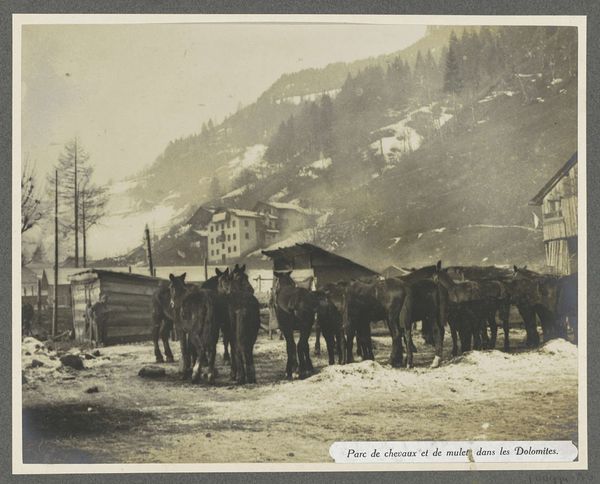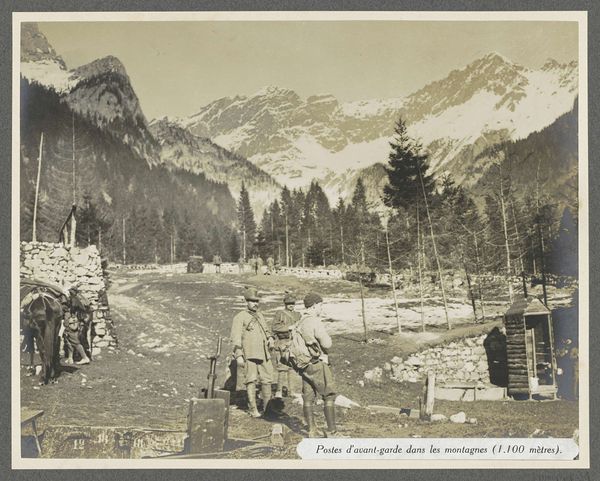
Dimensions: height 220 mm, width 280 mm
Copyright: Rijks Museum: Open Domain
Curator: Here we have a gelatin-silver print titled "Veldhospitaal en een wasserij aan het front in de Dolomieten," or "Field Hospital and a Laundry at the Front in the Dolomites," created around 1916. Editor: Immediately, I’m struck by the somber greyscale and the weight of snow everywhere. The image feels utilitarian, stark, with that angular alpine architecture. There's something desolate in this record of war. Curator: It is a work created in the context of World War I, likely commissioned by Henri de Rothschild to document the war efforts in the Dolomite Mountains. We see how war efforts impacted architecture and landscapes, turning domestic structures into aid stations. Editor: I notice the laundry hanging to dry from what I assume is a section of the hospital. Is that laundry a symbol of mundane reality juxtaposed with conflict, the small domestic rhythms forced upon such a chaotic scene? The text at the bottom seems to affirm that meaning. Curator: The laundry suggests attempts to impose order and normalcy onto the chaos. There is also an important relationship between disease prevention, sanitation, and public health during wartime that photographs like this demonstrate. The image itself may serve as evidence that something is being done. Editor: Indeed, the very visible wagon with what appears to be stacks of dirty linen also becomes charged with meaning: sickness and injury and, potentially, resilience. Visually, its rounded shapes also give us some softness against those stark lines. Curator: It speaks volumes about the support systems necessary to maintain a war effort. We often hear of the battles but less often of the massive logistical and sanitary undertakings needed to keep armies functional. The photograph is an important artifact for this reason. Editor: It makes you think about what's not in frame—the suffering, the injured… the missing. And how this rather simple photo becomes this potent, condensed signifier. Curator: Exactly. This isn’t just a depiction of a landscape or a building; it's a glimpse into the social and medical landscape of war. It demonstrates the institutions of care as equally relevant. Editor: It's sobering to contemplate the stories held within this frozen moment, each shadow imbued with symbolic weight. Curator: It provides a fascinating historical perspective that many contemporary viewers may overlook when seeing depictions of war, prioritizing instead acts of conflict.
Comments
No comments
Be the first to comment and join the conversation on the ultimate creative platform.
